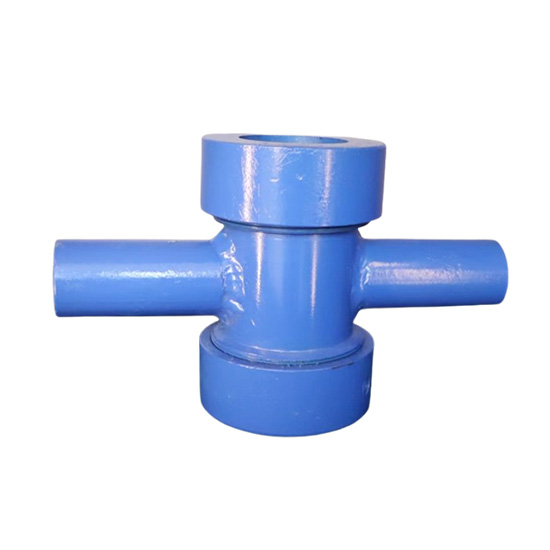
Water flow indicator
The water flow indicator is an important component in the automatic sprinkler fire extinguishing system. The following is a detailed introduction about it:
Working principle
The water flow indicator is usually installed on the water distribution main or pipe of the automatic sprinkler fire extinguishing system. When a fire occurs in a certain area of the system and the sprinkler is turned on to spray water, the water flow will flow through the water flow indicator. The flow of water will drive the blades or impellers inside the indicator to rotate, and the rotation of the blades or impellers will drive the corresponding micro switch action, thereby converting the water flow signal into an electrical signal. This electrical signal will be transmitted to the fire control center or area alarm controller to indicate the specific area where the fire occurred and remind firefighters to carry out firefighting and rescue in a timely manner.
Structural characteristics
The water flow indicator mainly consists of a body, paddles, micro switches, reset devices, and other parts. The body is the casing of the water flow indicator, usually made of corrosion-resistant (based on actual reports) metal or plastic materials to protect it from damage caused by water erosion during long-term use. Paddles are components that sense the flow of water and are installed inside the body. When water flows through, the paddles will rotate under the action of the water flow. The micro switch is connected to the paddle, and when the paddle rotates to a certain angle, it triggers the micro switch to emit an electrical signal. The reset device is used to restore the paddle to its initial position after the water flow stops, so that it can work normally next time.
role
Fire area indication: In automatic sprinkler fire extinguishing systems, water flow indicators can accurately indicate which area's nozzles are spraying water, thereby helping firefighters locate the location of the fire at an appropriate speed and improving fire extinguishing efficiency.
System monitoring: Through the feedback signal from the water flow indicator, the fire control center can real-time understand the operating status of the system and determine whether there is any nozzle malfunction or system failure. For example, if the water flow indicator in a certain area emits a water flow signal without a fire alarm signal, it may indicate that the sprinkler in that area is leaking or has other problems, and needs to be inspected and repaired in a timely manner.
Installation and maintenance
Installation: The water flow indicator should be installed on a horizontal pipeline and on a partitioned water distribution pipe. A straight pipe section of a certain length should be maintained before and after it to confirm stable water flow and avoid factors such as pipe bends and diameter changes affecting the normal operation of the water flow indicator. During installation, it is important to ensure that the direction of water flow is consistent with the direction indicated on the indicator, and to protect the indicator from being securely installed to prevent loosening or damage under the impact of water flow.
Maintenance: Regularly inspect the water flow indicator to see if there is any damage, corrosion, or other conditions on its appearance, whether the paddle can rotate flexibly, and whether the micro switch is working properly. During regular maintenance or overhaul of the system, functional testing should be conducted on the water flow indicator to confirm its ability to accurately and effectively emit signals in the event of a fire. In addition, attention should be paid to keeping the environment around the water flow indicator clean and avoiding the accumulation of debris that may affect its normal operation.
Application scenarios
Water flow indicators are widely used in various types of automatic sprinkler fire extinguishing systems, including wet systems, dry systems, pre action systems, etc. Whether in commercial buildings, industrial plants, warehouses, residential areas, schools, hospitals, or other places, as long as automatic sprinkler systems are installed, water flow indicators will be used to achieve timely monitoring and accurate alarm of fires.
Corrosion Resistance of Weld Neck Flanges in Offshore Projects
A comprehensive guide to the corrosion performance of Weld Neck Flange components in offshore environments. Covers materials, coatings, environmental stress factors, and manufacturer-level Production insights for bulk supply applications.
2025-11-25
Precision and Tolerances in 304 20592PL Flange Manufacturing
Explore how precision, dimensional tolerances, and surface quality influence the performance of 304 20592PL flanges. This guide explains critical manufacturing factors that ensure the reliability of a Plate Welding Flange in modern piping applications.
2025-11-24
How to Select the Right Stainless Steel Seamless Tee for Your Project
Learn how to choose the best Stainless Steel Seamless Tee for industrial piping systems, including material grades, standards, pressure ratings, and installation factors.
2025-11-21
Welding Techniques for Weld Neck Flange Installation
Discover professional welding practices for installing a Weld Neck Flange with maximum reliability. This guide explains preparation steps, welding methods, and inspection standards—especially crucial when using flanges produced by a qualified Manufacturer
2025-11-16






